Database setup |

|

|

|

|
|
Database setup |

|

|

|

|
|
|
||
After you successfully finish the Web Installer, open a web browser with the Database Setup. It will create database tables for Kentico CMS in a specified SQL Server database.
Specify the SQL Server and authentication mode used to access the server:
•SQL Server name or IP address - enter the name of the server. You will typically use one of these:
-the name of the server (such as DBSERVER1) or
-the IP address of the server (such as 192.168.1.105) or (local)
-<SERVERNAME>\sqlexpress (if you're using Microsoft SQL Server 2005 Express Edition)
•Use SQL Server account - use this option if your server is configured for mixed mode authentication with SQL logins
•Use integrated Windows authentication (ASP.NET account) - use this option if your server is configured for Windows integrated authentication. In this case, you need to use SQL Server 2005/2008 Management Studio to create a new login for user account under which you currently run the web application (ASPNET for Windows XP and Network Service for 2003 - the actual ASP.NET account name is displayed on the screen).
Click the Next button.
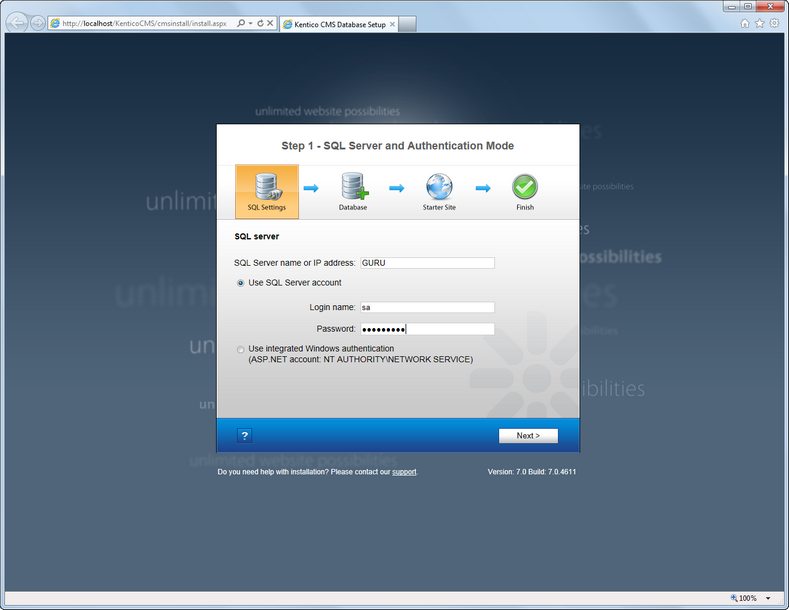
Now you can decide if you want to use an existing database or create a new database. In both cases, you need to enter the name of the database into the appropriate field.
In case you are using an existing database, you can choose if you want to Create Kentico CMS database objects.
- If the existing database already contains Kentico CMS objects (tables, stored procedures, views), then uncheck the box.
- If the database does not contain these objects (typically when you are installing into an empty database), leave the option enabled.
Click Next.
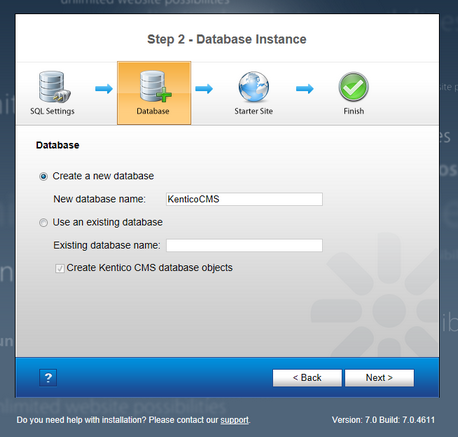
When using an existing database, you may also come across the following dialog. It is displayed if the database collation is different from SQL_Latin1_General_CP1_CI_AS. The dialog lets you choose if you want to change the collation or leave the original one.
For correct functionality, it is highly recommended to change it to the recommended value.
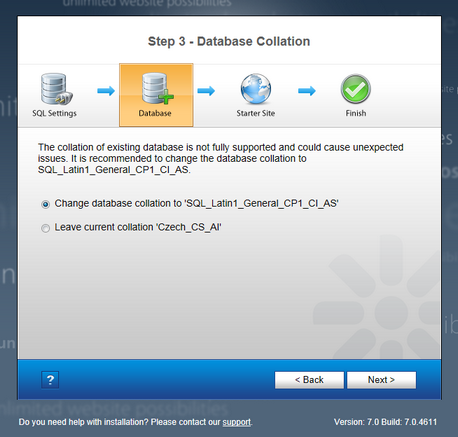
A log will be displayed, showing the progress of database creation. After it finishes, a message Database has been successfully created. appears at the top of the log and you are moved forward to the next step.
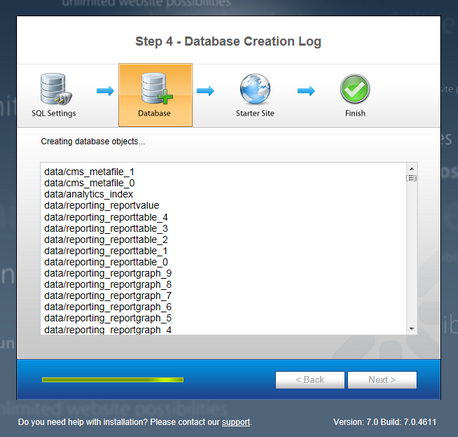
If you run Kentico CMS on a domain other than localhost or 127.0.0.x (where x is between 1 and 255), you will be asked to insert a license key. Since the trial version works only with http://localhost and http://127.0.0.x (where x is between 1 and 255), the same dialog is displayed if your trial period has expired.
Enter a valid license key and click the Next button.
Alternatively, you can skip this dialog by clicking Skip this dialog link at the bottom left part of the dialog and continue to the New site wizard. You can enter a license key later under Site Manager -> Licenses.

The installer offers you the following options:
•Choose a starter site:
-Corporate Site - this option installs the sample corporate site - it is recommended for most users, especially for evaluators
-Blank site - this is a blank site without any content; you will use it to create a new site from scratch
-Blank site ASPX - the same as above, but for ASPX page templates
-and others
•Continue to the New site wizard - this option is recommended if you're starting a new site from scratch; learn more in the New site wizard chapter
•Import existing Kentico CMS website - use this option if you have already created a website with Kentico CMS and you need to import it into a new installation (e.g., on the production server)
If you're new to Kentico CMS, it's highly recommended that you start with the sample Corporate Site (portal engine). If you decide to run the New site wizard, you can find more details in the following chapter.
Select an option and click the Next button.

A log is displayed showing you the progress of website creation.
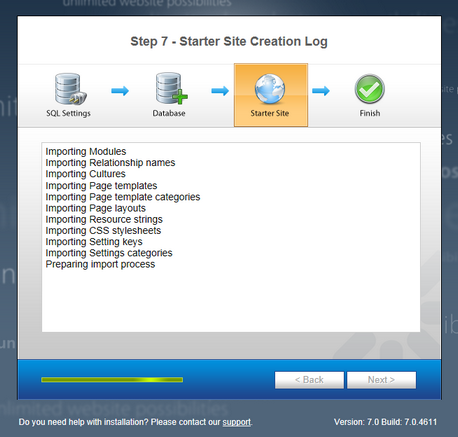
Once the website is created, the installer displays a confirmation and you can follow the link to access the new live website.
This is the final step of the necessary installation procedure. You can now begin with managing the website content.

|
Default user name and password
The default user name is administrator, the default password is blank.
It's highly recommended that you change the password after you finish the installation.
The default URL of your site is http://localhost/KenticoCMS. The default URL of CMS Desk is http://localhost/KenticoCMS/CMSDesk. The default URL of Site Manager is http://localhost/KenticoCMS/CMSSiteManager.
|